
The Orange Tornadoes and Newark Tornadoes were two manifestations of a long-lived professional American football franchise that existed in some form from 1887 to 1941 and from 1958 to 1970, having played in the American Amateur Football Union from 1888 to 1895, the National Football League from 1929 to 1930, the American Association from 1936 to 1941, the Atlantic Coast Football League from 1963 to 1964 and 1970, and the Continental Football League from 1965 to 1969. The team was based for most of its history in Orange, New Jersey, with many of its later years in Newark. Its last five seasons of existence were as the Orlando Panthers, when the team was based in Orlando, Florida. The NFL franchise was sold back to the league in October 1930. The team had four head coaches in its two years in the NFL – Jack Depler in Orange, and Jack Fish, Al McGall and Andy Salata in Newark.
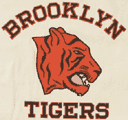
The Brooklyn Dodgers were an American football team that played in the National Football League from 1930 to 1943, and in 1944 as the Brooklyn Tigers. The team played its home games at Ebbets Field of the baseball National League's team, the Brooklyn Dodgers. In 1945, because of financial difficulties and the increasing scarcity of major league–level players because of the war-time defense requirements at the height of World War II, the team was merged with the Boston Yanks and were known as the Yanks for that season.
The 1930 NFL season was the 11th regular season of the National Football League.
The 1933 NFL season was the 14th regular season of the National Football League.
Throughout the years, a number of teams in the National Football League (NFL) have either moved or merged.
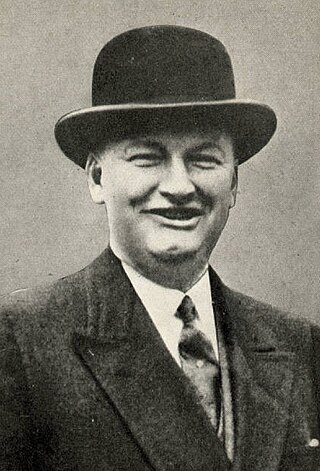
Timothy James Mara was the American founding owner of the New York Giants of the National Football League (NFL). The Giants, under Mara, won NFL championships in 1927, 1934, 1938, and 1956 and divisional titles in 1933, 1935, 1939, 1941, 1944, 1946, and 1958.
The first American Football League (AFL), sometimes called AFL I, AFLG, or the Grange League, was a professional American football league that operated in 1926. It was the first major competitor to the National Football League (NFL). Founded by Charles "C.C." Pyle, (1882–1939), and General Charles X. Zimmerman, (1865–1926), as vice president and starring Hall of Fame halfback Harold Edward "Red" Grange, (1903–1991), the short-lived league with nine teams competed against the more established – then six-year-old – NFL, both for players and for fans. While Pyle's and Grange's New York Yankees team and the already established Philadelphia Quakers became reliable draws, the lack of star power and the uncertain financial conditions of the other seven teams led to the league's dissolution after one season.

The New York Giants, an American football team which plays in the National Football League (NFL), have had a long, and at times turbulent financial history. The Giants were founded in 1925 by businessman and bookmaker Tim Mara with an investment of 500 US$, and became one of the first teams in the then five-year-old NFL. Mara passed ownership of the team on to his sons Wellington and Jack after the 1929 Stock Market Crash to insulate the team from creditors. At first the Mara sons owned the team in name only, but they took increasingly larger roles in the organization beginning in the mid-1930s. Tim Mara remained involved in the team's operations until his death in 1959, when his sons assumed full control of the club. After Jack's passing in 1965, his son, Tim, took over his share of the team.
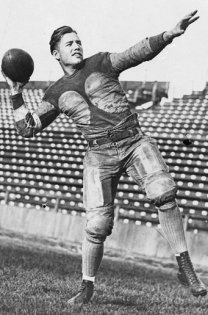
Stephen Douglas Wycoff was an American football running back for the New York Giants, Staten Island Stapletons, and Boston Redskins in the National Football League (NFL), the Newark Bears in the first American Football League (AFL), and the Boston Shamrocks in the second American Football League (AFL). He played college football at Georgia Tech, where he was a running back and senior captain.

Elmer Kenneth Strong was an American professional football player who was a halfback and fullback. He also played minor league baseball. Considered one of the greatest all-around players in the early decades of the game, he was inducted into the College Football Hall of Fame in 1957 and the Pro Football Hall of Fame in 1967 and was named to the NFL 1930s All-Decade Team.
The 1926 AFL season is the only season of the first American Football League. It started with nine teams, with the initial game of the season being played in front of 22,000 fans in Cleveland, Ohio, but by the end of the season, only four teams were still in existence: three teams owned or subsidized by league founder C. C. Pyle and star Red Grange and league champion Philadelphia Quakers. The initial lineup of teams included the traveling Wildcats and a charter member of the National Football League, the Rock Island Independents, which became a second traveling team after having poor attendance in its first three games.
The American Association (AA) was a professional American football minor league based in New York City. Founded in 1936 with teams in New York and New Jersey, the AA extended its reach to Providence, Rhode Island prior to the onset of World War II. After a four-year hiatus, the league was renamed the American Football League as it expanded to include teams in Ohio and Pennsylvania. In 1947, the Richmond Rebels of the Dixie League purchased the assets of the defunct AFL Long Island Indians and jumped leagues.
The Newark Bears were a professional American football team that competed in the first American Football League in 1926 AFL season. Owned by the New Jersey Athletic Association, the Bears played their home games in Davids' Stadium. Coached by player-coach Hal Hansen, the majority of the team played their college football in Georgia and Florida.
The Cleveland Panthers were a professional American football team. They were an independent team founded in 1919 from the remains of the Youngstown Patricians. The Panthers played, with various degrees of success, continuously from 1919 and eventually, as fewer opponents played them each year after 1926, sputtered to a quiet folding in 1933.
The Chicago Bulls were a professional American football team that competed in the first American Football League in 1926. Owned by Joey Sternaman, the Bulls also had AFL founders C. C. Pyle and Red Grange as shareholders. Joey Sternaman was also the coach and blocking back for the Bulls throughout their brief existence.
Daniel Blaine (1891–1958) was a professional football player for the Staten Island Stapletons from 1915 until 1924. In 1915 he, along with three other players, formed the team to play other semi-pro teams from New York and New Jersey. He suspended his football career in 1918 to serve in the United States military during World War I. Once the war ended, Blaine took over sole ownership of the Stapletons. He stayed in the Stapleton lineup at halfback until ending his playing career in 1924 at age 33. After his retirement from football, Blaine focused solely on owning and managing the team.
Edwin (Piggy) Simandl was the owner of the Orange Tornadoes and Newark Tornadoes of the National Football League. He became the team's owner in 1929, when Ole Haugsrud, the owner of Duluth Eskimos, sold his defunct franchise rights to Simandl. This allowed Simandl to place his Orange Tornadoes in the NFL. In addition to running his NFL franchise, Simandl was a wholesale meat salesman, which was why he was given the nickname "Piggy". In 1930, the team moved to Newark and played a dismal season that resulted in just 1 win. Afterward, Simandl sold his franchise rights back to the NFL. However, after a 2-year hiatus, he reorganized his team in Orange. The Tornadoes then defeated the Staten Island Stapletons 7-0 in their first game back.
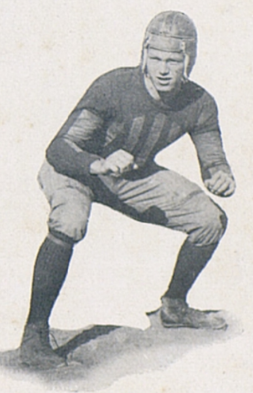
Burton Caswell "Cy" Williams was an American college and professional football player who was a tackle for three different professional teams in the American Football League (AFL) and National Football League (NFL) during the 1920s and early 1930s.
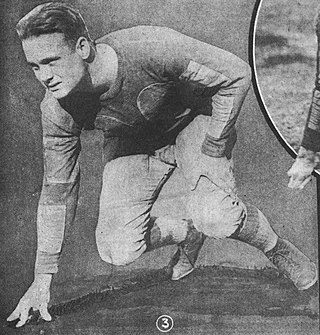
Ivan Andy "Ike" Williams was an American gridiron football player of the 1920s. He played college football for Georgia Tech and later had a brief professional career.
Michael Stramiello Jr. was an American football player, coach, and team owner. He played five seasons in the National Football League (NFL) from 1930 to 1934. He was also the coach and an owner of the Newark Tornadoes in 1937 and 1938.







